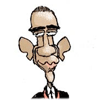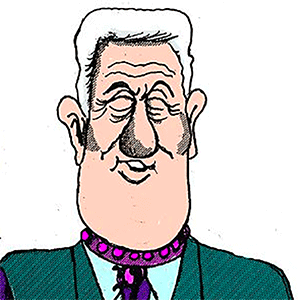Allison Schrager: Trump's economic policy can't be just nostalgia
Published in Op Eds
President-elect Donald Trump’s economic legacy may well depend on whether he prefers the comparative form of an adjective. Specifically, does he believe it is hard to make a living in the U.S. — or harder than it used to be?
It is not an insignificant distinction. The central conceit of economic populism, dominating both the left and the right, is that things used to be better. This is a misdiagnosis. Making your way in an uncertain world and a constantly changing economy has always been hard — and always will be. But things are not harder than they used to be; in many ways they’re getting easier.
That may be a small and not especially helpful consolation to the millions of Americans struggling in today’s economy. But in terms of both political rhetoric and economic policy, the difference matters.
It is true that inflation is still higher than it was before the pandemic, and this has made Americans’ lives harder and more uncertain (and is a big reason that Trump won). But inflation is not driving his economic agenda, which aims to make America great again.
The word again suggests there was a time, even before his first administration, when things were better. When exactly that was is unclear, but Trump has spoken about reviving manufacturing through tariffs, so let’s say it’s the postwar era of the 1960s. Which, to be fair, is not completely different from President Joe Biden’s agenda, which aimed to restore America’s greatness by empowering unions and subsidizing more manufacturing through industrial policy.
But going back to America’s manufacturing economy would not actually be so great.
It is tempting to romanticize the 1960s, when 30% of the labor force had manufacturing jobs that offered stable wages, long-term employment, a defined-benefit pension and enough income from a single earner to support a family. But that era was not as good as it seemed. Living standards were much lower; people lived in smaller houses and didn’t travel as much, and they were less likely to send their children to college.
In 1965, 69.5% of prime working-age Americans were in the labor force. Today that figure is 83.3% — largely because so many women now work outside the home. Six decades ago, the U.S. had a much less inclusive economy, which did not offer wealth or stability for a majority of the population. This may be one reason there was so much social unrest during this supposed economic golden age.
Today’s economy offers more opportunities to more people. Living standards, and life expectancy, are higher. More people go to college, own their home, have health insurance, can get credit, invest in the markets and receive retirement benefits. Wages have become more steady, and people stay in jobs longer. In short, the economy is more stable than it was 60 years ago.
None of this is to say that today’s economy is perfect. Health care and education, while better and more available, are also more expensive, in real terms. For young people, it is still a struggle to establish themselves financially and professionally, never mind personally. The continual release of new technology introduces constant uncertainty into the economy — which may help explain why, even though Americans have more financial wealth, they still don’t feel financially secure. Economic expectations have risen, a sign of progress but also a cause of stress and anxiety.
Again, this may be small consolation to the many Americans who feel they are falling behind. But in terms of both politics and policy, language matters. It should be possible to offer sympathy and solutions to present-day problems without promising to return to a world that never really existed. The best way to help people is to facilitate their adaptation to the modern economy, educate their children for jobs of the future, keep the economy growing, and offer targeted help where it is most needed.
Any attempt to restore the economy of the past — whether by expanding tariffs, trying to revitalize unions that don’t fit the modern economy or imposing industrial policy — will not increase prosperity. It will create distortions that slow growth, increase the debt, and help a few at the expense of many.
What worked in Trump’s first term were practical policies that embraced the future, such as using the tax code to encourage more research and innovation and rescinding regulations that make the labor market less dynamic. Which way he’ll go in his second term remains uncertain.
As of this writing, Trump’s administration-in-formation seems to have at least three factions. There is one led by Vice President-elect JD Vance, defined by a Yale Law School of Economics worldview that wants to restore the manufacturing jobs of the past at any cost. There is the Elon Musk clique, which is keen to make change and willing to break things along the way. And in the middle are people like his some of his likely candidates for Treasury secretary, who understand growth requires embracing the future but don’t want to completely upend the current economy. They see tariffs as a tool for dealmaking more than restoring the old economy.
If Trump sticks with the middle ground — with maybe a splash of Musk — he can set the stage for the prosperity many Americans experienced in his first administration. If he gives in to the Vance view of the world, America may end up with the economy of the past. Then things really will be harder than they used to be.
____
This column does not necessarily reflect the opinion of the editorial board or Bloomberg LP and its owners.
Allison Schrager is a Bloomberg Opinion columnist covering economics. A senior fellow at the Manhattan Institute, she is author of “An Economist Walks Into a Brothel: And Other Unexpected Places to Understand Risk.”
_____
©2024 Bloomberg L.P. Visit bloomberg.com/opinion. Distributed by Tribune Content Agency, LLC.




























































Comments